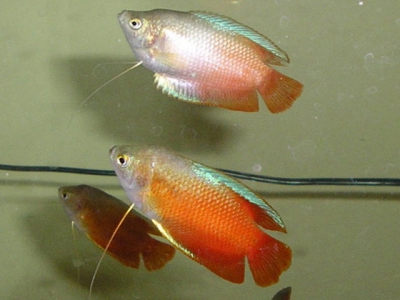Fish disease guide - Infection with Infectious Spleen and Kidney Necrosis Virus (ISKNV)

What Is It?
ISKNV-like viruses are a group of viral agents in the genus Megalocytivirus, family Iridoviridae. These viruses predominantly cause disease in a variety of freshwater fish (particularly cichlids, gouramis and poeciliids).
The disease leads to high mortality of fish.
Where and When Might it Occur?
ISKNV-like viruses are prone to inactivation by desiccation or heat at temperatures above 5oºC, but are stable in water at 4ºC for extended periods.
The disease is thought to spread via horizontal transmission through the water from fish to fish or from contact with infected faeces.
Diagnosis
Fish infected with the disease often remain on the bottom of tank and have a reduced appetite to food.
Lethargy and respiratory distress (rapid movement of opercula) can also be seen.
Towards the later stages, high mortality of between 50 and 100 per cent is seen.
Gross pathological signs are:
• Changes in body colour (e.g. darkening or lightening of body colour)
• Exophthalmos (popeye)
• Abdominal distension (due to fluid or enlargement of organs).
Microscopic pathological signs are:
• Basophilic hypertrophied cells throughout numerous body tissues, but especially the haematopoietic tissues of the kidney and spleen.
Related news
 Fish disease guide - Bacterial Kidney Disease (BKD)
Fish disease guide - Bacterial Kidney Disease (BKD) Bacterial kidney disease (BKD) is a chronic bacterial disease first reported in wild Atlantic salmon populations in the rivers Spey and Dee in Scotland in 1933
 Fish disease guide - Channel Catfish Virus Disease (CCVD)
Fish disease guide - Channel Catfish Virus Disease (CCVD) CCVD is caused by a herpesvirus. It is known to affect Blue and Channel catfish. The disease mainly occurs in fish that are less than one year old
 Fish disease guide - Infectious Haematopoietic Necrosis (IHN)
Fish disease guide - Infectious Haematopoietic Necrosis (IHN) Infectious haematopoietic necrosis (IHN) is an infectious viral disease of salmon and trout. It was first recognised in the 1950s in sockeye and chinook salmon.